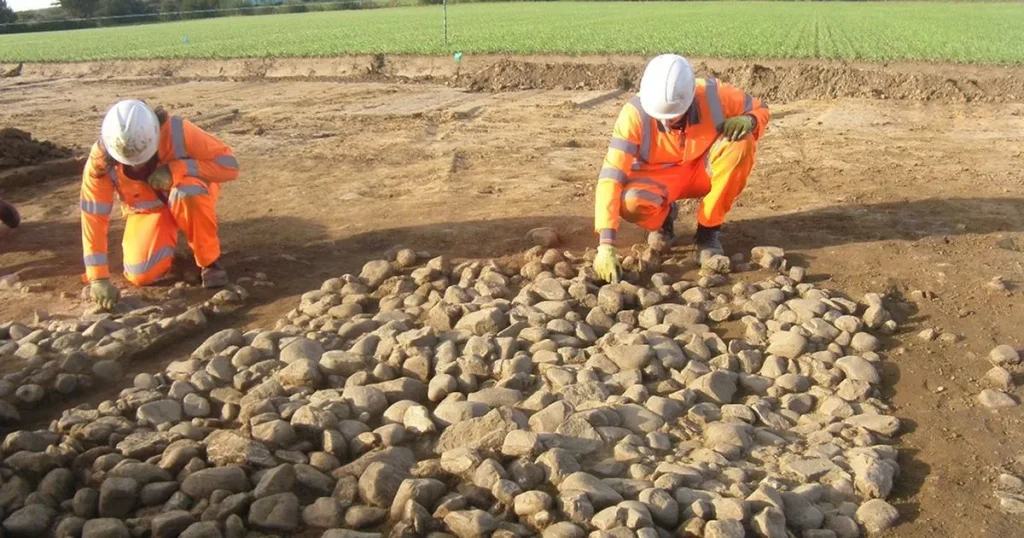The individual burial was unearthed by archaeologists investigating a sewer being built at Full Sutton in East Yorkshire. They found human remains believed to be 4,500 years old, buried in a circular monument in a foetal or “crouched” position, known as a “round barrow”. The burial is thought to be around 4,500 years old, as old as the Great Pyramid of Giza. The bones were surprisingly well-preserved due to being backfilled with a mixture of burnt stone and charcoal. The archaeologists believe that the bones and the associated material have the potential to provide insights about life during that time period.
The experts also found an old barrow next to a “burnt mound” with remains of an earth oven that still had stone from its last use. They also discovered a well on the site. The burnt mounds are thought to have been used for dying clothes or cooking food, while some theorize they were used as saunas. The team hopes that analyzing dirt from the well will reveal more information about the activities at the burnt mound. Additionally, remnants of an old Roman road were found on the site, hinting at a route leading north to the Roman town of Derventio at Reckondales. These discoveries were made during investigations for a £5 million project to build a new sewer for a prison being built next to HMP Full Sutton.
The construction project at Full Sutton also uncovered bits of an old Roman road, suggesting a route leading north to the Roman town of Derventio. Yorkshire Water is carrying out archaeological investigations as part of a project to build a new sewer for a prison being constructed adjacent to HMP Full Sutton. The project manager at Yorkshire Water, Adam Ellis, expressed enthusiasm for the discoveries made during the investigations of the archaeological site. The new prison, named HMP Millsike, will benefit from the services provided by the sewer currently being laid. The archaeologists working on the project hope that the various findings, such as the burial, burnt mounds, and Roman road, will shed light on life in Full Sutton around 4,500 years ago.
The ancient human remains were discovered at Full Sutton during the construction of a sewer for a new prison. The person was buried in a circular monument in a foetal position, hinting at a round barrow burial common across the UK. The archaeologists found burnt stones and charcoal backfilled with the bones, aiding in their surprisingly good preservation. The associated materials with the remains have the potential to provide insights into life during that era. The experts also unearthed a burnt mound, an earth oven, a well, and remains of an old Roman road at the site, possibly shedding light on different activities or practices. These discoveries were made during investigations for a new sewer being built as part of a prison project near HMP Full Sutton.
The project at Full Sutton involved archaeological investigations conducted by Yorkshire Water and Ecus Archaeology, as part of a project to build a new sewer for a prison being constructed near HMP Full Sutton. The excavation uncovered human remains believed to be 4,500 years old, with the burial revealing interesting insights into burial practices and preservation methods of that time period. Additionally, the discoveries of burnt mounds, an earth oven, a well, and a Roman road hint at different activities or infrastructure present in Full Sutton thousands of years ago. The team hopes that further analysis of the materials found on the site will provide a deeper understanding of life in the area during the Neolithic or Bronze Age. The construction project at Full Sutton has not only unearthed historical artifacts but also provided an opportunity to learn more about the site’s rich archaeological history.


